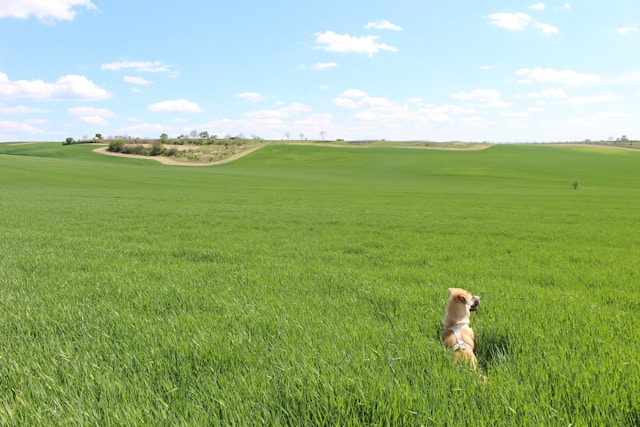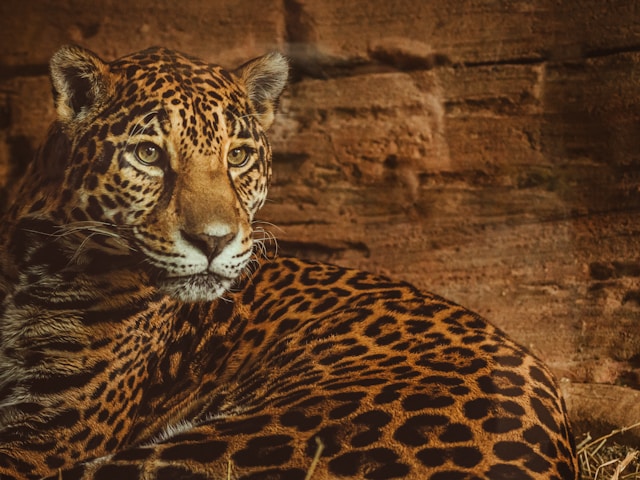From soaring termite mounds to underwater cities crafted by beavers, the animal kingdom is teeming with examples of architectural brilliance. These structures aren’t just instinctual outputs—they’re reflections of complex decision-making, social dynamics, and environmental adaptation. Studying them offers profound insights into animal behavior, revealing how non-human creatures solve problems, protect their young, communicate, and even engage in environmental engineering.
The ingenuity of these natural structures rivals human designs, yet they are created without blueprints, machines, or external instructions. Be it the intricate geometry of a spider web or the strategic layout of an ant colony, animals build with purpose. In this blog, we delve deep into the astonishing world of animal architecture and what it tells us about the behavioral intelligence of Earth’s most overlooked engineers.
This exploration is not only a celebration of wild innovation but also a powerful lens through which we can better understand evolution, survival strategies, and ecological harmony. As we explore these structures, we will see just how intimately animal behavior is connected to construction, environment, and community life.
1. The Architects Beneath Our Feet: Ant Colonies and Social Engineering
Ants are masters of underground engineering, creating vast subterranean cities with specialized chambers for nurseries, food storage, and the queen’s quarters. These cities are feats of construction that mirror the social hierarchy and collective intelligence of ant colonies.
What makes this even more astonishing is the absence of a central planner. Each ant operates using a set of simple rules, yet their combined efforts result in highly organized, optimized structures. This collective animal behavior is a phenomenon known as swarm intelligence. Scientists and engineers study it for insights into robotics and decentralized problem-solving.
Furthermore, ant colonies are dynamic. They adapt their construction based on climate, soil type, and threats from predators or flooding. Ants modify airflow, humidity levels, and even the chamber depths to regulate temperature, demonstrating a remarkable ability to build in response to environmental feedback.
2. Beavers: The Dam Builders Reshaping Ecosystems
When it comes to transformative animal builders, beavers are ecological game-changers. Their dams and lodges don’t just provide shelter—they create entire wetlands that support a diverse array of flora and fauna. This kind of construction highlights an extraordinary connection between animal behavior and environmental modification.
Beavers instinctively select and fell trees, drag them to water, and construct dams using mud, stones, and logs. These structures slow down water flow, reduce erosion, and create ponds. In doing so, beavers increase biodiversity and mitigate flooding, making them keystone species in many ecosystems.
Beaver lodges are equally fascinating. With underwater entrances and insulated walls, they offer protection from predators and the cold. Their design showcases strategic thinking and planning far beyond mere instinct—highlighting the sophisticated behavior embedded in these seemingly simple creatures.
3. Termites: Building Sky-Scraping Mounds with Internal Air Conditioning
Termite mounds can rise up to 30 feet tall and contain millions of inhabitants. But these are not just towering dirt piles—they are intricately designed with complex tunnel systems, ventilation shafts, and moisture control chambers.
What’s extraordinary is how termite mounds maintain internal temperatures within a narrow range despite extreme external fluctuations. This is made possible through passive ventilation systems—something modern architects study under biomimicry. The termites’ ability to maintain such balance stems from intricate, decentralized animal behavior finely tuned to environmental conditions.
Research shows that termites use pheromones to coordinate and adjust their building strategies, continually adding to or modifying their mounds. Their communication and construction behavior reveal not just survival instincts, but a form of collective intelligence rooted in sensory awareness and environmental interaction.
4. Spiders: Masters of Silk and Structural Geometry
Few things capture the imagination like a spider web shimmering with morning dew. These elegant structures are much more than traps—they are masterclasses in geometry, tension, and material science. Spider silk is stronger than steel by weight, and each web is tailored to its builder’s specific hunting style.
Some spiders weave orb webs to trap flying insects, while others create funnel webs or even underwater silk domes. The diversity of web designs mirrors the diversity in animal behavior, with each species adapting its technique to habitat and prey. Web-building is a complex behavior involving spatial memory, repeated calibration, and environmental feedback.
Additionally, some spiders abandon and rebuild their webs daily, demonstrating a continuous cycle of assessment and improvement. This behavior is driven not only by instinct but also by situational judgment—if a web fails to catch prey, the spider adapts its design the next night.
5. Bowerbirds: The Artists of Courtship Architecture
In the rainforests of Australia and New Guinea, male bowerbirds create elaborate “bowers”—structures built to attract mates. These aren’t nests but performance spaces, decorated with colorful objects like berries, shells, and even plastic trash. The birds arrange these items with astonishing precision to impress potential mates.
Each species of bowerbird has its own architectural style. Some build avenues of twigs; others construct maypole-style displays. The level of detail in decoration, symmetry, and even optical illusions reflects an advanced cognitive ability tied directly to reproductive success.
The courtship bowers are physical manifestations of animal behavior driven by aesthetics, selection pressure, and creativity. This kind of architectural behavior challenges the assumption that animals build purely for survival. Here, beauty and complexity play key evolutionary roles.
6. Prairie Dogs: The Underground Architects of the Grasslands

Prairie dogs, often called “nature’s engineers,” construct vast underground towns known as colonies. These towns can span acres and consist of an intricate maze of tunnels, chambers, and lookout posts. Each component of their architecture serves a clear purpose—nurseries protect young pups, tunnels provide escape routes, and watchtowers offer vantage points for spotting predators.
This remarkable feat of construction is closely linked to their social animal behavior. Prairie dogs live in large, cooperative groups where communication and alertness are vital. Their vocalizations are some of the most complex in the animal kingdom, and their warning calls influence how they use their architecture—whether to hide or flee.
The environmental benefits of these colonies extend beyond shelter. The burrows aerate the soil and influence vegetation patterns, making prairie dog towns hubs of biodiversity. Their engineering thus integrates behavior, community survival, and ecosystem impact in an elegant natural balance.
7. Weaverbirds: Artisans of the Avian World
Weaverbirds are famous for their extraordinary nests, which resemble woven baskets hanging from tree branches. These nests are marvels of natural engineering, crafted entirely from grass, twigs, and leaves. The precision with which these materials are intertwined ensures durability and protection from predators and harsh weather.
The process of nest building showcases complex animal behavior marked by problem-solving and learning. Male weaverbirds often build multiple nests to attract females, and females inspect the quality of each before choosing a mate. The construction effort directly influences reproductive success, adding a layer of evolutionary pressure that refines these architectural skills over generations.
Moreover, some species collaborate in large colonies where nest placement follows specific patterns to optimize space and reduce competition. The social dynamics behind these decisions demonstrate a sophisticated understanding of community living and resource management.
8. Coral Reefs: The Living Cities of the Ocean
While coral reefs may seem like static natural formations, they are actually the product of millions of tiny animals called coral polyps working collectively over centuries. These marine architects secrete calcium carbonate to build intricate skeletons that form the backbone of vibrant underwater cities.
The formation of coral reefs is a stunning example of cooperative animal behavior on a massive scale. Each polyp contributes to the structure, and together they create habitats that support approximately 25% of all marine species. The reefs provide shelter, breeding grounds, and hunting spaces for countless fish, crustaceans, and other organisms.
Additionally, coral polyps engage in symbiotic relationships with algae called zooxanthellae, which provide energy through photosynthesis. This partnership is crucial for reef growth and health, reflecting an intricate web of behavioral and ecological interdependencies that keep these living structures thriving.
9. Honeybees: Masters of Geometric Efficiency
Honeybees’ hexagonal honeycombs are often cited as nature’s perfect engineering example. These combs maximize storage space while using the least amount of wax, an energy-intensive material for bees to produce. The precise hexagonal pattern is not only aesthetically pleasing but also structurally sound and efficient.
The construction of honeycombs involves a sophisticated display of animal behavior. Worker bees communicate through dances and pheromones to coordinate building activities. They regulate temperature and humidity inside the hive to optimize wax plasticity and ensure the comb’s integrity.
Studies have shown that bees don’t merely build hexagons by instinct—they perform spatial calculations and adjust their work according to the position of neighbors and environmental factors. This collective problem-solving ability challenges the idea that insect behavior is purely reflexive, instead pointing to emergent intelligence in social insects.
10. The Psychological Impact of Animal Architecture on Their Builders
The relationship between animals and their built environments goes beyond physical shelter. Many species demonstrate signs of stress reduction, enhanced social bonding, and improved reproductive success linked directly to their architectural choices.
For example, birds that build well-constructed nests often attract more mates and raise healthier offspring. Similarly, animals with protected burrows experience less predation and greater longevity. These findings highlight how animal behavior around construction is deeply tied to psychological well-being and survival.
Interestingly, disruptions to these structures—whether by environmental change or human interference—can lead to behavioral shifts such as increased aggression, reduced mating, or abandonment. Understanding these links is crucial for conservation efforts and for appreciating the subtle ways animals interact with their habitats.
11. Biomimicry: How Human Design Learns from Animal Engineers
Modern architects and engineers increasingly turn to nature for inspiration, adopting biomimicry to create sustainable, efficient structures. Animal-built designs, honed by millions of years of evolution, offer blueprints for solving human challenges like climate control, resource management, and material optimization.
For instance, termite mounds inspire natural ventilation systems in buildings, reducing reliance on air conditioning. Honeycomb structures influence lightweight yet strong materials used in aerospace and construction industries. Even the color and arrangement of bowerbird decorations inform visual marketing and design principles.
By studying animal behavior in architecture, humans can develop greener technologies that coexist with natural ecosystems rather than disrupt them. This symbiosis marks a promising future for innovation rooted in ecological wisdom.
12. The Evolution of Animal Architecture: From Instinct to Innovation
While many animal structures arise from instinct, some species demonstrate remarkable flexibility and innovation in their building techniques. For example, crows and ravens have been observed using tools and modifying natural materials creatively.
This evolution of architectural behavior reveals a continuum—from rigid genetic programming to adaptable problem-solving. It also raises questions about animal cognition and consciousness, challenging us to rethink how intelligence manifests across species.
By examining the diversity and complexity of animal engineering, we gain deeper insight into the evolutionary pressures that shape not just physical forms but also social systems and behavioral repertoires.
Celebrating the Architects of the Animal Kingdom
The natural world is full of astonishing structures that reflect the rich tapestry of animal behavior. From the underground labyrinths of ants and prairie dogs to the shimmering webs of spiders and the massive coral reefs beneath the sea, each architectural marvel tells a story of survival, creativity, and ecological connection.
These living constructions remind us that intelligence takes many forms and that the line between instinct and innovation is often blurred. As we continue to learn from these wild engineers, we not only appreciate the beauty and complexity of nature but also find inspiration to build a more sustainable future.
By understanding and respecting the genius of animal architects, we open doors to greater harmony with the natural world—a lesson as vital as any in today’s rapidly changing environment.

